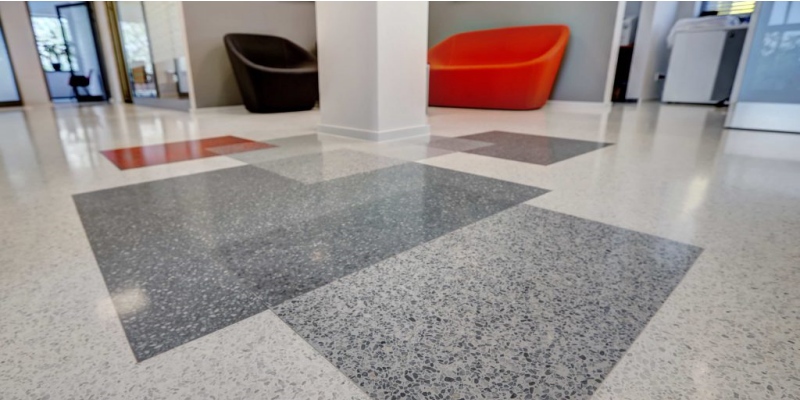How can we help you
Terrazzo flooring, prized for its durability and aesthetic appeal, can encounter issues over time, with unevenness being a common problem. Uneven terrazzo floors can detract form both the functionality and beauty of the space, creating potential hazards and diminishing the floor’s polished look. Identifying and addressing the root causes of these issues to maintaining the longevity and appearance of terrazzo surfaces.
Several factors contribute to the development of uneven terrazzo floors. The primary cause often lies in the substrate - the concrete base must be level and adequately cured before terrazzo installation. Any irregularities or movements in the substrate can lead to an uneven terrazzo surface. Additionally, improper installation techniques, such as inconsistent application or inadequate bonding, can result in an uneven finish. Over time, buildings naturally settle, and this movement can cause shifts in the flooring, leading to unevenness. Environmental factors, such as temperature and humidity changes, can also cause the terrazzo and substrate to expand and contract, exacerbating the problem.
Addressing uneven terrazzo floors typically involves several corrective techniques. One of the most effective methods is grinding and polishing. This process uses diamond grinding tool to grind down high spots and polish the surface, resulting in a smooth an level finish. For severely uneven floors, applying a new layer of terrazzo or an epoxy terrazzo overlay can create a fresh, level surface. This method requires proper preparation of the existing floors to ensure the new layer adheres correctly.

For minor unevenness, self-leveling compounds offer a practical solution. These compounds flow into low spots, creating a flat surface upon curing, which can then be polished with diamond polishing pads to match the surrounding terrazzo. Small patches of unevenness can also be addressed by removing the affected areas and filling them with a new terrazzo mix, by grinding and polishing to blend seamlessly with the existing floor. Regular maintenance, including cleaning and sealing, helps prevent uneven wear and tear, preserving the floor’s levelness.
Preventing uneven terrazzo floors in new installations involves meticulous preparation and skilled craftsmanship. Ensuring the substrate is perfectly level, clean, and well-cured is essential. Cracks or imperfections in the substrate should be addressed before the terrazzo is applied. Hiring experienced professionals who follow best practices in mixing, application, and leveling can significantly reduce the risk of uneven surfaces. Consistent environmental conditions during and after installation also play a vital role in preventing expansion and contraction issues.
While uneven terrazzo floors pose challenges, they can be effectively managed and corrected with the right approach. By understanding the causes and solutions for unevenness, property owners can enjoy the lasting benefits of terrazzo floors, maintaining their appeal and functionality for years to come.